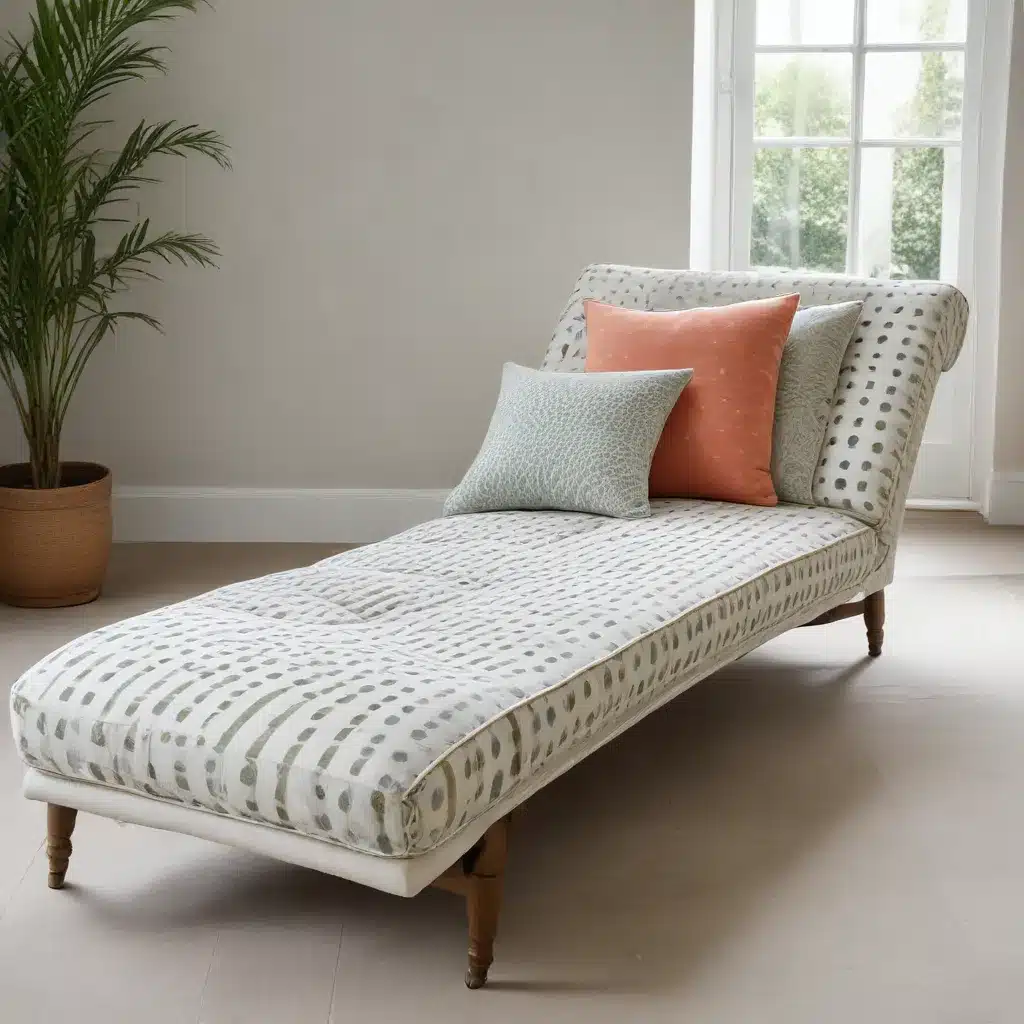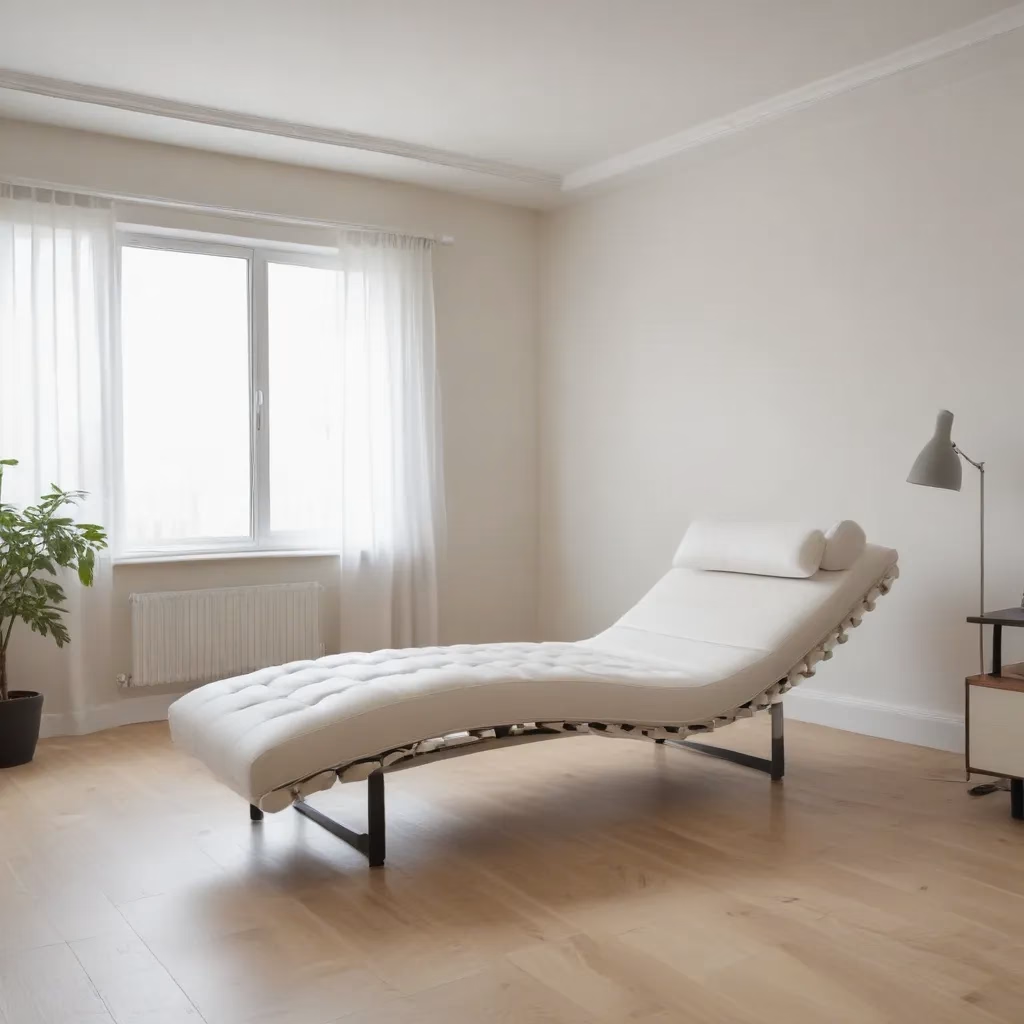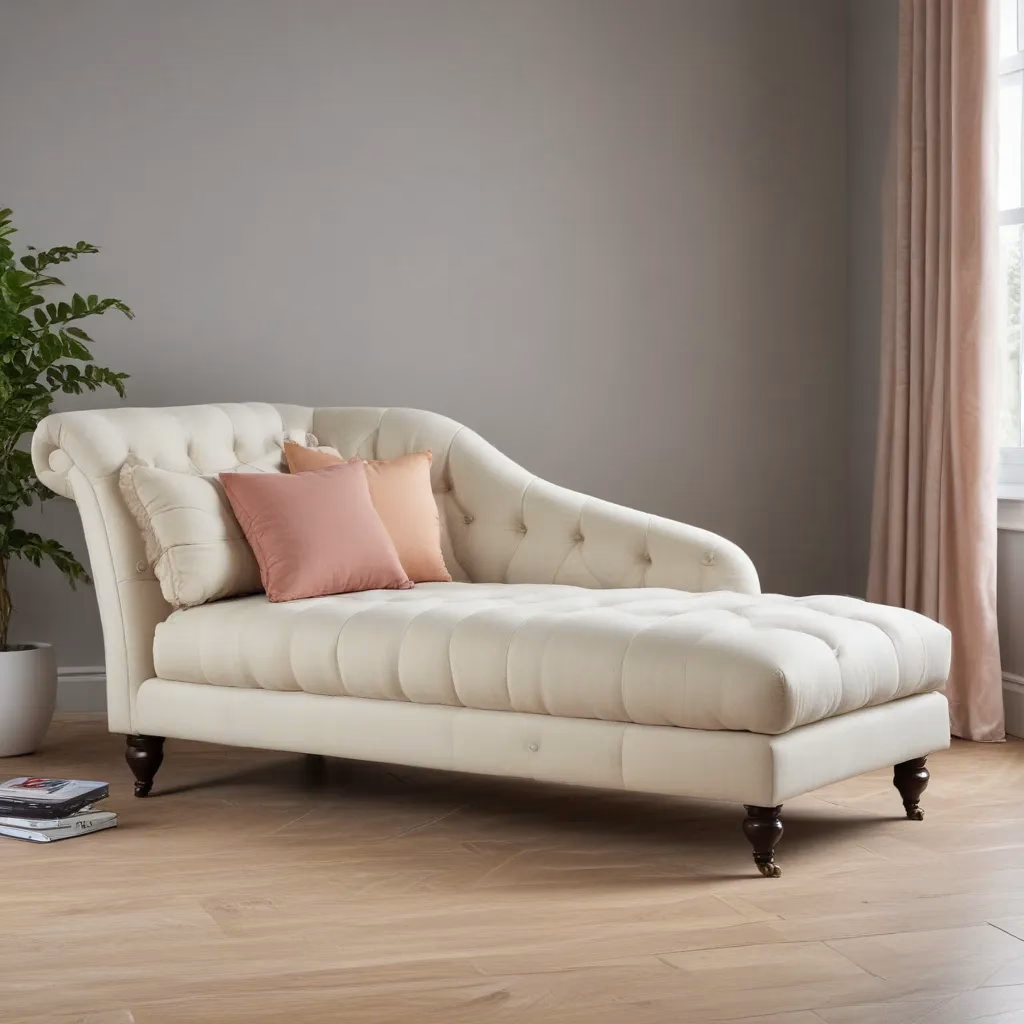
The Quest for Comfort: Choosing the Right Fabric
As a furniture specialist, I’ve encountered countless individuals seeking the perfect balance between style and comfort in their living spaces. One question that frequently arises, especially from those living in warmer climates or dealing with temperature sensitivities, is how to select a sofa fabric that won’t leave them feeling overheated. This concern is particularly relevant when it comes to chaise longues, which invite extended periods of relaxation.
In my experience, the fabric choice for your chaise longue can significantly impact your comfort level, especially in terms of temperature regulation. While the aesthetic appeal of certain materials like velvet might be tempting, it’s crucial to consider the practical aspects of your selection. I’ve found that many homeowners initially gravitate towards plush, luxurious fabrics without realizing the potential drawbacks in terms of heat retention and maintenance.
Let’s explore some fabric options that can help keep you cool while lounging on your chaise, along with their pros and cons. Remember, the goal is to find a material that not only looks great but also enhances your comfort during those long, lazy afternoons or cozy evenings at home.
Cotton: A Natural Choice for Coolness
When it comes to breathability and comfort, cotton stands out as a top contender. I’ve recommended cotton fabrics to many clients over the years, and the feedback has been overwhelmingly positive. Here’s why cotton might be the ideal choice for your chaise longue:
-
Breathability: Cotton allows air to circulate freely, helping to regulate body temperature and prevent that uncomfortable “sticky” feeling.
-
Moisture-wicking properties: This natural fiber absorbs moisture, keeping you dry even on warmer days.
-
Durability: High-quality cotton upholstery can withstand regular use and is relatively easy to clean.
However, it’s worth noting that not all cotton fabrics are created equal. In my professional opinion, opting for a high-quality, tightly woven cotton will yield the best results. These fabrics tend to maintain their shape better and resist pilling, which can occur with looser weaves over time.
One potential drawback of cotton is its tendency to wrinkle. To combat this, I often suggest choosing a cotton blend that incorporates a small percentage of synthetic fibers. This can enhance the fabric’s wrinkle resistance without significantly compromising its cooling properties.
Linen: The Lightweight Luxury
Linen is another natural fiber that I frequently recommend for clients seeking a cool and comfortable chaise longue fabric. Here’s why linen might be the perfect choice for your space:
-
Exceptional coolness: Linen is known for its ability to keep you cool in warm weather. It’s highly breathable and moisture-wicking, making it an excellent choice for temperature regulation.
-
Durability: Despite its lightweight feel, linen is surprisingly strong and can last for years with proper care.
-
Timeless aesthetic: Linen offers a relaxed, effortlessly chic look that can elevate any living space.
In my years of experience, I’ve found that linen-upholstered chaise longues often become the favorite spot in the home for many of my clients. The fabric’s natural texture adds depth and interest to the piece, while its cooling properties make it perfect for lounging.
However, it’s important to be aware of linen’s tendency to wrinkle easily. While some embrace this as part of the fabric’s charm, others may find it frustrating. To mitigate this, consider a linen blend or opt for a slipcover that can be easily removed and ironed.
Microfiber: A Synthetic Solution
For those who prefer synthetic options, microfiber can be an excellent choice for a cool and comfortable chaise longue. Here’s why I often recommend microfiber to my clients:
-
Temperature neutrality: Unlike some synthetics that can feel warm to the touch, high-quality microfiber remains temperature neutral, neither heating up nor cooling down significantly.
-
Moisture-wicking: Microfiber is designed to wick away moisture, helping to keep you dry and comfortable.
-
Easy maintenance: This fabric is highly stain-resistant and easy to clean, making it a practical choice for busy households.
In my professional experience, microfiber has come a long way in recent years. Modern versions of this fabric can closely mimic the look and feel of natural fibers while offering superior durability and ease of care.
One potential downside to microfiber is that it may not be as breathable as natural fibers like cotton or linen. However, advancements in fabric technology have led to the development of more breathable microfiber options. When selecting a microfiber upholstery, I always recommend feeling the fabric in person to assess its comfort level.
Performance Fabrics: The Best of Both Worlds
In recent years, I’ve seen a surge in the popularity of performance fabrics for upholstery. These innovative materials are designed to offer the best features of both natural and synthetic fibers. Here’s why performance fabrics might be the ideal solution for your chaise longue:
-
Temperature regulation: Many performance fabrics are engineered to provide excellent temperature control, keeping you cool in summer and warm in winter.
-
Stain resistance: These fabrics often come with built-in stain repellent properties, making them incredibly easy to maintain.
-
Durability: Performance fabrics are designed to withstand heavy use, making them an excellent investment for frequently used furniture pieces.
I’ve had numerous clients express their satisfaction with performance fabrics on their chaise longues. These materials often offer a soft, comfortable feel while providing practical benefits that enhance the longevity and usability of the furniture.
When considering performance fabrics, it’s essential to research the specific properties of each option. Some are better suited for temperature regulation, while others may excel in stain resistance or durability. As always, I recommend feeling the fabric in person before making a final decision.
The Importance of Proper Care and Maintenance
Regardless of the fabric you choose for your chaise longue, proper care and maintenance are crucial for ensuring long-lasting comfort and coolness. Here are some tips I always share with my clients:
-
Regular vacuuming: Use a soft brush attachment to remove dust and debris weekly. This prevents particles from settling into the fabric fibers, which can affect breathability.
-
Prompt stain treatment: Address spills immediately to prevent them from setting into the fabric. Use appropriate cleaning methods based on the fabric type.
-
Rotation: If possible, rotate your chaise longue cushions regularly to ensure even wear and maintain the fabric’s shape.
-
Professional cleaning: Consider having your chaise longue professionally cleaned annually to remove deep-seated dirt and refresh the fabric.
By following these care instructions, you can significantly extend the life of your chaise longue fabric and maintain its cooling properties.
Considering Your Lifestyle and Environment
When advising clients on fabric selection for their chaise longues, I always emphasize the importance of considering their lifestyle and environment. Here are some factors to keep in mind:
-
Climate: If you live in a particularly humid area, prioritize fabrics with excellent moisture-wicking properties.
-
Sunlight exposure: For chaise longues placed in sunny spots, consider fade-resistant fabrics to maintain their appearance over time.
-
Pets and children: If you have furry friends or little ones, opt for durable, easy-to-clean fabrics that can withstand frequent use.
-
Allergies: For those with sensitivities, hypoallergenic fabrics or those treated with antimicrobial properties might be the best choice.
Remember, the perfect fabric for your chaise longue should not only keep you cool but also align with your daily life and needs.
The Role of Color and Texture
While focusing on the cooling properties of fabrics, it’s important not to overlook the impact of color and texture on both comfort and aesthetics. In my experience, these factors can significantly influence the overall feel of your chaise longue:
-
Light colors: Lighter shades tend to reflect heat, potentially contributing to a cooler feel. They can also make a space appear larger and more open.
-
Dark colors: While darker hues may absorb more heat, they can be practical for hiding stains and wear. Consider using them in cooler climates or areas with less direct sunlight.
-
Texture: Smoother textures often feel cooler to the touch, while heavily textured fabrics can trap heat. However, some texture can add visual interest and depth to your furniture.
I always encourage my clients to consider how their fabric choice will integrate with their overall interior design. A chaise longue is often a focal point in a room, and the right fabric can elevate the entire space.
Customization Options for Ultimate Comfort
One aspect of choosing the right fabric for your chaise longue that I find particularly exciting is the possibility for customization. Many furniture retailers, including Sofa Spectacular, offer customization options that allow you to create the perfect piece for your needs.
Consider these customization possibilities:
-
Fabric combinations: Mix and match different fabrics on various parts of the chaise longue for both aesthetic appeal and practical comfort.
-
Removable covers: Opt for slip-covered designs that allow you to change the fabric seasonally or for easy cleaning.
-
Cushion firmness: Customize the density of your cushions to achieve the perfect balance of support and comfort.
-
Size and shape: Tailor the dimensions of your chaise longue to fit your space and body perfectly.
In my experience, clients who take advantage of these customization options often end up with pieces they truly love and use frequently.
The Future of Cool Fabrics
As a furniture specialist, I’m always excited to see new developments in fabric technology. The future looks promising for those seeking cool and comfortable upholstery options:
-
Phase-change materials: These innovative fabrics can absorb, store, and release heat to maintain a consistent temperature.
-
Eco-friendly cooling fabrics: Sustainable materials that offer excellent temperature regulation are becoming increasingly available.
-
Smart fabrics: We may soon see upholstery fabrics that can actively respond to body temperature and adjust their properties accordingly.
While these technologies are still evolving, they represent exciting possibilities for the future of comfortable seating.
Making Your Final Decision
Choosing the right fabric for your chaise longue is a personal decision that depends on various factors. Here’s a summary table to help you compare some of the options we’ve discussed:
| Fabric Type | Coolness | Durability | Maintenance | Aesthetic Appeal |
|---|---|---|---|---|
| Cotton | High | Good | Moderate | Versatile |
| Linen | Very High | Good | High | Elegant |
| Microfiber | Moderate | Very Good | Easy | Modern |
| Performance | High | Excellent | Very Easy | Varied |
Remember, the best choice for you will depend on your specific needs, preferences, and lifestyle. Don’t hesitate to request fabric samples and test them in your space before making a final decision.
In conclusion, selecting the right fabric for your chaise longue is key to ensuring both style and comfort in your living space. By considering factors such as coolness, durability, and maintenance, you can find a fabric that will keep you comfortable for years to come. Whether you opt for the natural breathability of cotton or linen, the practicality of microfiber, or the innovation of performance fabrics, there’s a perfect solution out there for every home.
Remember, your chaise longue should be a haven of relaxation in your home. With the right fabric choice, you can create a cool, comfortable spot that invites you to unwind and enjoy your space to the fullest.



